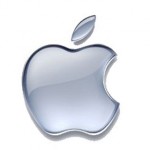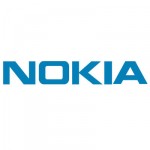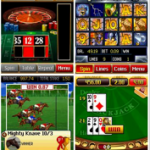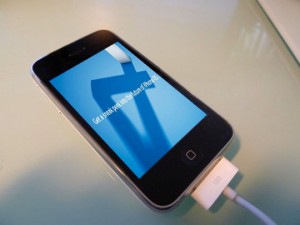Android, OS 4 and Symbian: Who’s Got Game?



Mobile gaming is nothing new. Even the most rudimentary phones sold today come with a few titles that users can click though in their spare time. Recently, however, mobile technology has reached the point that gaming on-the-go is becoming incredibly advanced, incorporating things like accelerometers, touchscreen interfaces, and 3D graphics accelerators into games to provide a much more engaging user experience.
While mobile telephones have yet to approach the capabilities of dedicated gaming platforms like the Sony PSP or Nintendo DS, they nonetheless offer impressive gaming potential. We took a look at the three biggest names in mobile phone firmware – Google’s Android, Apple’s OS 4, and the open-source alternative Symbian. Our goal was to answer one simple question: which mobile operating system is better for mobile gaming?
For each system, we looked at two types of games – dedicated and online. Dedicated games are anything written specifically for that platform; these usually need to be purchased, downloaded and installed in order to be enjoyed. Online games are just that – they’re out there on the internet, and users just have to point their phone’s web browser at them in order to play. These web games use either flash or java technology, and can range from simple Tetris clones to real-money casino games like slots, poker, or blackjack.

Android
Released in October of 2008, Google’s Android mobile operating system is based on a Linux kernel. As of early 2010, it is the fourth most popular smartphone platform, at least in the US.
The Android OS supports both accelerometer and multi-touch interaction. It offers excellent graphics capabilities, especially when it comes to its 3D rendering potential. Games like the popular HomeRun Battle 3D really show what the device is capable of. Visually, Android games can rival the Nintendo DS, and devices that offer a touch-screen interface make the comparison even more apt.
Online gaming on the Android suffers. Its java support is mediocre, and as of yet, it does not support flash, so most online games won’t even run on Android devices. Fortunately, full flash support has been promised with the v2.2 update, due out later this year.
- Pros
- Excellent graphics capabilities
- Multi-touch and accelerometer support
- Cons
- Lack of available games
- Very poor web game support

Apple OS 4
Apple’s upcoming update to their iPhone, iPad and iPod Touch software has been making headlines recently. It offers several great updates to the existing version, most notably its multitasking capabilities.
For gamers, however, not much is new. Apple has been shouting about the new Game Center, but users seem less excited. It’s basically a clone of Xbox Live, offering multiplayer gaming over networks. While Apple is in the lead in this department, we will have to wait to see how this pans out.
Beyond the new Game Center, OS 4 supports an enormous variety of downloadable games, available through the Apple Apps Store. Many are free, and those that aren’t come very cheap. The variety is outstanding, and the quality is often jaw-dropping, especially when enjoyed on an iPad.
As for online gaming, OS 4 fares quite well. Despite its lack of flash, there are many dedicated iPhone games that can be played instantly on the internet. In addition to many 3rd party providers, Apple hosts a huge selection of “official” web apps on its homepage.
- Pros
- Incredible number of downloadable and web-based games
- Multi-touch and accelerometer support
- Cons
- No flash support (maybe never)
- Games can be expensive

Symbian
This open-source smartphone platform has been in development for a while, but its code was just released in February 2010. Nearly half of all smartphones sold are based on the Symbian OS, making it the world’s most popular mobile operating system.
Most devices out there still run on older Symbian versions. In fact, at the time of writing this, only one device supports the new Symbian^3 – the Nokia N8. Its touch screen, HD screen and 3D graphics accelerator beg for hardcore games to push its limits.
Unfortunately, Symbian is behind the times, and has quite a lot of catching up to do before it can compete with Google or Apple for a top spot in the mobile market. Yes, the numbers are in Symbian’s favor, but if we look at quality over quantity, it comes in last.
Oh yeah, games – Symbian offers excellent java support, making it good for web-based games, but since most Symbian devices don’t offer touch screens, they can be cumbersome to play. Dedicated games for the Symbian are rare, and tend to look and play like the best games from five years ago.
- Pros
- Widespread availability, high device compatibility
- Excellent java support makes web gaming easy
- Cons
- Most phones run old versions
- Not much available in the way of download games
The verdit?
It’s hard to say. Symbian falls gently into 3rd place, that much is clear, but Apple’s OS 4 and Google’s Android battle hard for the number one spot. Apple definitely has the “wow factor” going for it, and the number of games available is astonishing, but with Android getting flash with the next update, it will offer something that iPhone users have been after for years.
At the end of the day, we are tempted to call Apple OS 4 the winner of the mobile telephone gaming war, but the world moves fast, and Android is catching up fast.




Mobile gaming is nothing new. Even the most rudimentary phones sold today come with a few titles that users can click though in their spare time. Recently, however, mobile technology has reached the point that gaming on-the-go is becoming incredibly advanced, incorporating things like accelerometers, touchscreen interfaces, and 3D graphics accelerators into games to provide a much more engaging user experience.
While mobile telephones have yet to approach the capabilities of dedicated gaming platforms like the Sony PSP or Nintendo DS, they nonetheless offer impressive gaming potential. We took a look at the three biggest names in mobile phone firmware – Google’s Android, Apple’s OS 4, and the open-source alternative Symbian. Our goal was to answer one simple question: which mobile operating system is better for mobile gaming?
For each system, we looked at two types of games – dedicated and online. Dedicated games are anything written specifically for that platform; these usually need to be purchased, downloaded and installed in order to be enjoyed. Online games are just that – they’re out there on the internet, and users just have to point their phone’s web browser at them in order to play. These web games use either flash or java technology, and can range from simple Tetris clones to real-money casino games like slots, poker, or blackjack.

Android
Released in October of 2008, Google’s Android mobile operating system is based on a Linux kernel. As of early 2010, it is the fourth most popular smartphone platform, at least in the US.
The Android OS supports both accelerometer and multi-touch interaction. It offers excellent graphics capabilities, especially when it comes to its 3D rendering potential. Games like the popular HomeRun Battle 3D really show what the device is capable of. Visually, Android games can rival the Nintendo DS, and devices that offer a touch-screen interface make the comparison even more apt.
Online gaming on the Android suffers. Its java support is mediocre, and as of yet, it does not support flash, so most online games won’t even run on Android devices. Fortunately, full flash support has been promised with the v2.2 update, due out later this year.
- Pros
- Excellent graphics capabilities
- Multi-touch and accelerometer support
- Cons
- Lack of available games
- Very poor web game support

Apple OS 4
Apple’s upcoming update to their iPhone, iPad and iPod Touch software has been making headlines recently. It offers several great updates to the existing version, most notably its multitasking capabilities.
For gamers, however, not much is new. Apple has been shouting about the new Game Center, but users seem less excited. It’s basically a clone of Xbox Live, offering multiplayer gaming over networks. While Apple is in the lead in this department, we will have to wait to see how this pans out.
Beyond the new Game Center, OS 4 supports an enormous variety of downloadable games, available through the Apple Apps Store. Many are free, and those that aren’t come very cheap. The variety is outstanding, and the quality is often jaw-dropping, especially when enjoyed on an iPad.
As for online gaming, OS 4 fares quite well. Despite its lack of flash, there are many dedicated iPhone games that can be played instantly on the internet. In addition to many 3rd party providers, Apple hosts a huge selection of “official” web apps on its homepage.
- Pros
- Incredible number of downloadable and web-based games
- Multi-touch and accelerometer support
- Cons
- No flash support (maybe never)
- Games can be expensive

Symbian
This open-source smartphone platform has been in development for a while, but its code was just released in February 2010. Nearly half of all smartphones sold are based on the Symbian OS, making it the world’s most popular mobile operating system.
Most devices out there still run on older Symbian versions. In fact, at the time of writing this, only one device supports the new Symbian^3 – the Nokia N8. Its touch screen, HD screen and 3D graphics accelerator beg for hardcore games to push its limits.
Unfortunately, Symbian is behind the times, and has quite a lot of catching up to do before it can compete with Google or Apple for a top spot in the mobile market. Yes, the numbers are in Symbian’s favor, but if we look at quality over quantity, it comes in last.
Oh yeah, games – Symbian offers excellent java support, making it good for web-based games, but since most Symbian devices don’t offer touch screens, they can be cumbersome to play. Dedicated games for the Symbian are rare, and tend to look and play like the best games from five years ago.
- Pros
- Widespread availability, high device compatibility
- Excellent java support makes web gaming easy
- Cons
- Most phones run old versions
- Not much available in the way of download games
The verdit?
It’s hard to say. Symbian falls gently into 3rd place, that much is clear, but Apple’s OS 4 and Google’s Android battle hard for the number one spot. Apple definitely has the “wow factor” going for it, and the number of games available is astonishing, but with Android getting flash with the next update, it will offer something that iPhone users have been after for years.
At the end of the day, we are tempted to call Apple OS 4 the winner of the mobile telephone gaming war, but the world moves fast, and Android is catching up fast.

iPhone OS 4.0 – The New Features and Who Will Benefit the Most

While the new iPhone OS 4.0 is set to bring a lot of great changes to one of the most popular electronic devices ever created, not all users stand to benefit equally. Nobody should skip the upgrade, but some categories of users will benefit more than others. This is an overly-simplified breakdown of the situation, but it should help iPhone owners understand what they can expect from the upgrade.
What will OS 4.0 bring to the iPhone? First and foremost: multitasking. Apple has finally found the last piece of this puzzle, and their dev team figured out how to let iPod and related devices run more than one app at once, all without killing the battery. A double-click on the Home button will bring up a screen of currently-running apps, and a second click will focus on the target app instantly. Early reports say this new multitasking support is surprisingly efficient – though beware, users will be limited to running 4 apps at once.
Other new features include a few enhancements to the user interface. Users will be able to arrange apps inside folders, change the background behind the icons, and store up to 2,000 icons instead of the current 180.
Business users
This class if iPhone users stands to benefit the most. The new Multitasking will more than quadruple the power of the iPhone, and will reduce the amount of time it takes to complete every-day tasks. Increased security measures, like the ability to encrypt emails, and PIN codes, will certainly benefit enterprises. The new “unified inbox” system in the mail app will also benefit business users, letting them manage multiple email accounts simultaneously.
Casual users
Again, the new multitasking support means a big change in how the iPhone operates. Casual users can now stream internet music through Safari while reading an iBook, for example. The ability to customize the iPhone’s interface even further by changing the background will make the device even more personal. A host of other new features, from the ability to rotate photos to a new 5x zoom on the camera, will all come together to make OS 4.0 a big step-up for casual users.
Gamers
This class of user stands to benefit the least from the upcoming iPhone OS 4.0. Apple is excited about the new Social Gaming Network, but time will tell how this system will pan out. Flash is still not supported, so it means that a lot of the best online games are still not going to work. Fortunately, many game providers are offering alternatives – online games designed specifically for the iPhone. Many mobile casinos, for example, offer real-money casino games like slots and poker that will run inside Safari, letting gamers take things to the next level by putting a few dollars down on their skills.
3G and the second generation iPod touch owners
Sorry, because of your outdated hardware, you won’t be able to take full advantage of some of the new features that OS 4.0 will bring. Most notably, your device will not support the new multitasking feature, so you will still only be able to run one program at a time.
Original iPhone and iPod touch owners
No luck here. The first-gen devices simply won’t support OS 4.0. Owners of these devices should really consider an upgrade.
What about iAd?
One new “feature” that will be introduced with OS 4.0 is not going to be as welcome as the others: iAd. This new mobile advertising system will introduce in-app advertising. The system will allow full-screen video and even interactive advertising content to be launched from within an application, without the need to send the user out to Safari to offer this sort of content. In a way the new system will be less intrusive than before, but at the same time it might just open the iPhone up to even more spam.
Overall, previews and hands-on reviews of the new OS 4.0 are very positive. Most users stand to benefit on at least some level from the upgrade, and all users are encouraged to take the plunge. The only people who are left in the dark are owners of older devices – and of course those poor souls who don’t yet have an iPhone of their own!
Check the mobile section on BlackjackChamp.com for the latest mobile casino reviews

While the new iPhone OS 4.0 is set to bring a lot of great changes to one of the most popular electronic devices ever created, not all users stand to benefit equally. Nobody should skip the upgrade, but some categories of users will benefit more than others. This is an overly-simplified breakdown of the situation, but it should help iPhone owners understand what they can expect from the upgrade.
What will OS 4.0 bring to the iPhone? First and foremost: multitasking. Apple has finally found the last piece of this puzzle, and their dev team figured out how to let iPod and related devices run more than one app at once, all without killing the battery. A double-click on the Home button will bring up a screen of currently-running apps, and a second click will focus on the target app instantly. Early reports say this new multitasking support is surprisingly efficient – though beware, users will be limited to running 4 apps at once.
Other new features include a few enhancements to the user interface. Users will be able to arrange apps inside folders, change the background behind the icons, and store up to 2,000 icons instead of the current 180.
Business users
This class if iPhone users stands to benefit the most. The new Multitasking will more than quadruple the power of the iPhone, and will reduce the amount of time it takes to complete every-day tasks. Increased security measures, like the ability to encrypt emails, and PIN codes, will certainly benefit enterprises. The new “unified inbox” system in the mail app will also benefit business users, letting them manage multiple email accounts simultaneously.
Casual users
Again, the new multitasking support means a big change in how the iPhone operates. Casual users can now stream internet music through Safari while reading an iBook, for example. The ability to customize the iPhone’s interface even further by changing the background will make the device even more personal. A host of other new features, from the ability to rotate photos to a new 5x zoom on the camera, will all come together to make OS 4.0 a big step-up for casual users.
Gamers
This class of user stands to benefit the least from the upcoming iPhone OS 4.0. Apple is excited about the new Social Gaming Network, but time will tell how this system will pan out. Flash is still not supported, so it means that a lot of the best online games are still not going to work. Fortunately, many game providers are offering alternatives – online games designed specifically for the iPhone. Many mobile casinos, for example, offer real-money casino games like slots and poker that will run inside Safari, letting gamers take things to the next level by putting a few dollars down on their skills.
3G and the second generation iPod touch owners
Sorry, because of your outdated hardware, you won’t be able to take full advantage of some of the new features that OS 4.0 will bring. Most notably, your device will not support the new multitasking feature, so you will still only be able to run one program at a time.
Original iPhone and iPod touch owners
No luck here. The first-gen devices simply won’t support OS 4.0. Owners of these devices should really consider an upgrade.
What about iAd?
One new “feature” that will be introduced with OS 4.0 is not going to be as welcome as the others: iAd. This new mobile advertising system will introduce in-app advertising. The system will allow full-screen video and even interactive advertising content to be launched from within an application, without the need to send the user out to Safari to offer this sort of content. In a way the new system will be less intrusive than before, but at the same time it might just open the iPhone up to even more spam.
Overall, previews and hands-on reviews of the new OS 4.0 are very positive. Most users stand to benefit on at least some level from the upgrade, and all users are encouraged to take the plunge. The only people who are left in the dark are owners of older devices – and of course those poor souls who don’t yet have an iPhone of their own!
Check the mobile section on BlackjackChamp.com for the latest mobile casino reviews










